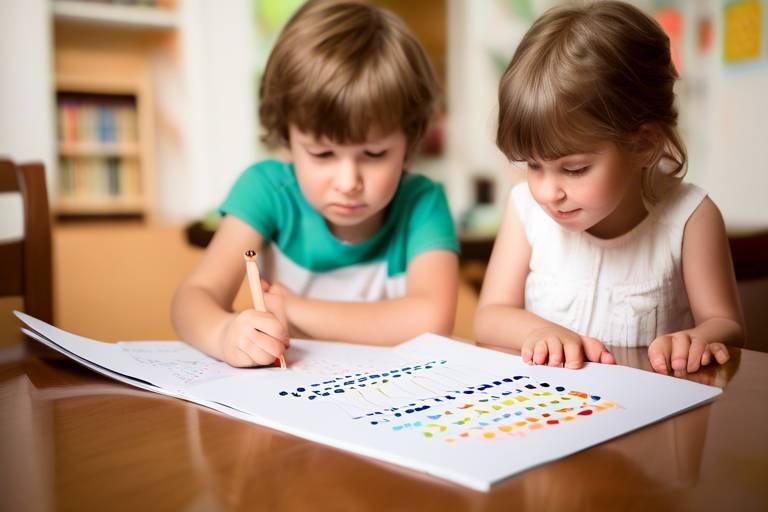Exploring Various Branches of Science in Home Learning
In today's fast-paced world, the opportunity for home learning has become more accessible than ever, allowing students to dive into various branches of science right from their living rooms. Whether you're a parent looking to enrich your child's education or a student eager to explore science on your own, there are countless resources and activities available that can make learning both fun and effective. Imagine transforming your home into a mini-laboratory, where the kitchen becomes a chemistry lab, the backyard turns into a biology field, and the living room is the perfect place for physics experiments! By leveraging everyday materials and online resources, you can uncover the mysteries of the universe and develop a passion for science that lasts a lifetime.
One of the most exciting aspects of learning science at home is the opportunity to engage in hands-on activities. These activities not only make learning more dynamic but also help students grasp complex concepts through practical experience. For instance, while studying physics, you might conduct simple experiments that demonstrate the laws of motion using a ball and a ramp. Similarly, in chemistry, you can explore the fascinating world of reactions by mixing baking soda and vinegar to create a bubbly volcano. The possibilities are endless!
Moreover, home learning allows for a personalized approach to education. Students can progress at their own pace, diving deeper into topics that pique their interest without the constraints of a traditional classroom setting. This flexibility can lead to a more profound understanding of scientific principles and encourage a sense of curiosity that is essential for scientific inquiry. By integrating technology, such as educational apps and online simulations, students can visualize concepts that might be difficult to understand through textbooks alone.
As we explore various branches of science, it's essential to remember that learning should be a collaborative and enjoyable experience. Parents can play an active role by participating in experiments, discussing scientific topics, and encouraging their children to ask questions. Creating a science-friendly environment at home can stimulate interest and foster a love for exploration. So, gather your family, roll up your sleeves, and embark on a scientific adventure together!
- What are some easy science experiments I can do at home? Simple experiments like creating a homemade volcano, making a rainbow with a glass of water and a flashlight, or growing crystals with sugar or salt can be both fun and educational.
- How can I make science learning more engaging for my child? Use hands-on activities, incorporate technology, and relate scientific concepts to everyday life to make learning more relatable and exciting.
- Are there online resources for science learning? Yes! There are numerous websites and platforms that offer interactive lessons, videos, and virtual labs to enhance the learning experience.
- How can I encourage my child to ask more questions about science? Foster a curious mindset by discussing scientific topics openly, encouraging them to explore their interests, and celebrating their inquiries.

Understanding Physics at Home
Physics can be fascinating when studied at home. Imagine turning your living room into a mini-laboratory where you can explore the laws of the universe! With just a few everyday items, you can conduct simple experiments that illustrate fundamental concepts like force, motion, and energy. For instance, have you ever wondered how a toy car moves? By rolling it down a ramp, you can visually grasp the concept of gravitational force and acceleration. Isn’t it amazing how much we can learn just by observing our surroundings?
One of the best things about learning physics at home is the opportunity for hands-on learning. You don’t need fancy equipment or a lab coat to dive into the world of physics. You can use items like balls, rubber bands, and even kitchen utensils to conduct experiments. For example, you can explore the principle of conservation of energy by dropping a ball from different heights and measuring how high it bounces back. This simple experiment not only captivates curiosity but also reinforces important scientific concepts.
To further enhance your understanding, consider documenting your experiments and findings in a science journal. This practice not only helps you track your progress but also encourages critical thinking. You can jot down questions that arise during your experiments, such as “What would happen if I used a heavier ball?” or “How does the angle of the ramp affect the speed of the car?” These inquiries can lead to deeper exploration and a greater understanding of physics principles.
Here are a few exciting physics experiments you can try at home:
- Balloon Rockets: Attach a balloon to a straw threaded on a string. Inflate the balloon without tying it, let it go, and watch it zoom along the string!
- Pendulum Swing: Create a pendulum using a string and a weight. Measure how long it takes to swing back and forth and explore the effects of length on swing time.
- Homemade Compass: Float a needle that has been magnetized on a piece of cork in water to create a simple compass. This demonstrates magnetic forces at play!
As you engage with these activities, remember that physics is not just about formulas and theories; it’s about understanding the world around you. Encourage your family to join in on the fun! Discuss your findings, share observations, and even challenge each other with new experiments. The more you collaborate, the richer your learning experience will be.
Finally, don't forget to integrate technology into your physics learning. There are numerous online resources and simulation tools that can help visualize complex concepts. Websites like The Physics Classroom offer interactive tutorials and quizzes that can reinforce what you’ve learned through hands-on activities.
Q: What are some simple physics experiments I can do at home?
A: You can try balloon rockets, pendulum swings, and homemade compasses, among others! These experiments require minimal materials and can illustrate key physics concepts.
Q: How can I make physics more engaging for my kids?
A: Encourage hands-on activities, document findings in a science journal, and discuss observations as a family. You can also incorporate technology through online resources and simulations.
Q: Is it safe to conduct physics experiments at home?
A: Yes, as long as you follow basic safety precautions. Always supervise young children, use safe materials, and ensure your workspace is clear of hazards.
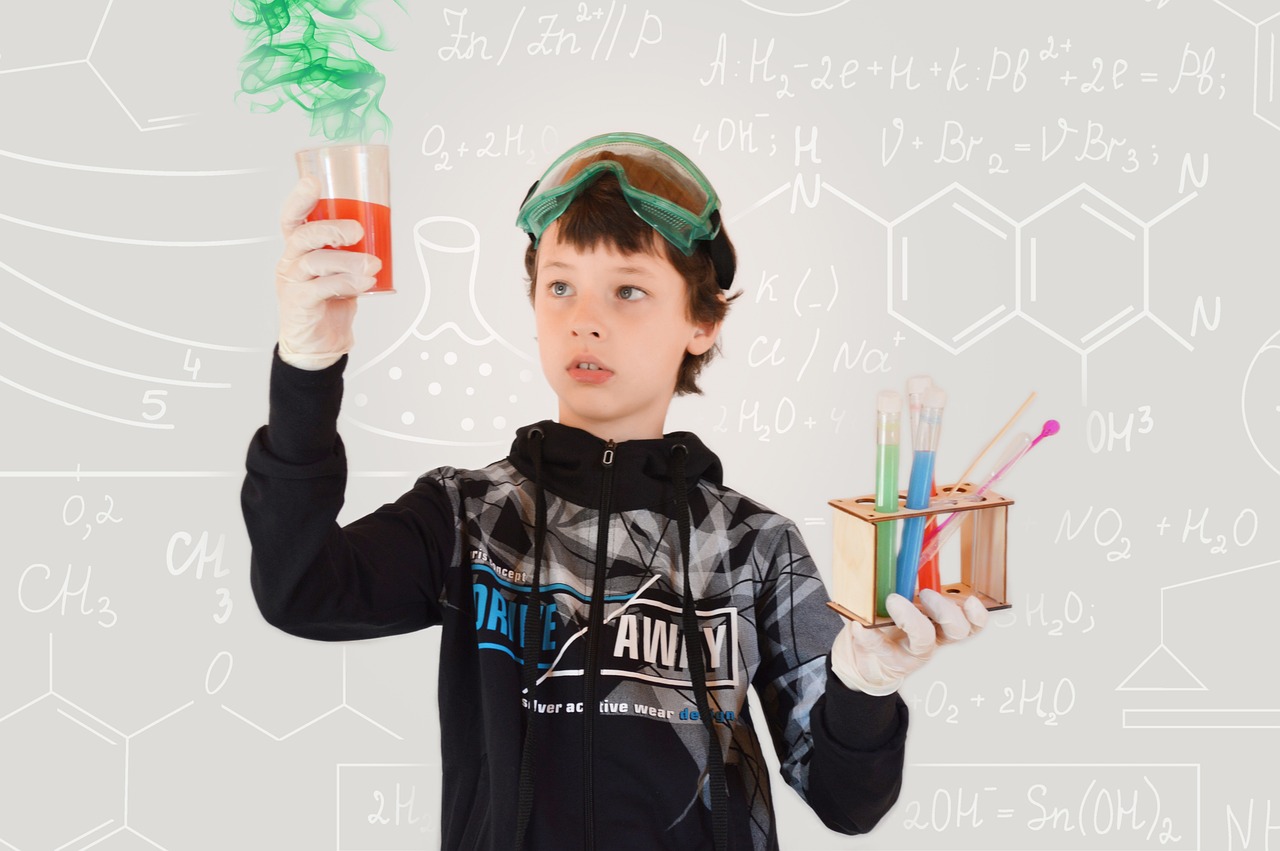
Engaging with Chemistry
Chemistry is not just a subject confined to the walls of a laboratory; it’s a vibrant part of our everyday lives! From the moment we wake up and brew our morning coffee to the time we wash our hands with soap, we are interacting with chemical processes. Home learning provides a fantastic opportunity for students to dive into the world of chemistry using simple, everyday items. Imagine transforming your kitchen into a mini-laboratory where you can explore the fascinating reactions that occur when ingredients mix or when cleaning products interact with dirt. This hands-on approach not only makes learning fun but also solidifies understanding through real-world applications.
One of the most exciting aspects of engaging with chemistry at home is the ability to conduct simple experiments that illustrate core concepts. For example, you can create a baking soda and vinegar volcano to demonstrate an acid-base reaction. This not only entertains but also educates, allowing students to visualize what happens during a chemical reaction. Here are some common household items that can be used for engaging experiments:
- Baking soda
- Vinegar
- Food coloring
- Dish soap
- Salt
These items can be combined in various ways to explore different chemical principles, such as reactions, mixtures, and solutions. For instance, mixing baking soda and vinegar produces carbon dioxide gas, which can be captured in a balloon for a fun demonstration of gas production. This kind of experimentation not only fosters curiosity but also enhances critical thinking skills as students hypothesize about what will happen next.
Conducting simple chemical experiments using common household items can spark curiosity and enhance understanding of chemical principles. For instance, creating a homemade pH indicator using red cabbage can help students understand acidity and alkalinity. By boiling red cabbage in water, you can extract a natural dye that changes color when mixed with acidic or basic solutions. This experiment illustrates the concept of pH in a visually engaging way!
While engaging with chemistry at home can be thrilling, it's crucial to prioritize safety. Always ensure that students wear appropriate protective gear, such as gloves and goggles, especially when dealing with substances that may cause irritation or reactions. Clear instructions should be provided, and adult supervision is essential when conducting experiments. Establishing a safe environment allows students to explore without fear, making the learning experience enjoyable.
Everyday chemistry can be explored through various activities such as cooking, cleaning, and even gardening. For example, when you bake a cake, you’re not just following a recipe; you’re witnessing a series of chemical reactions that transform batter into a delicious treat. Similarly, understanding the chemistry behind cleaning products can help students appreciate how these substances work to eliminate dirt and germs. By relating chemistry to daily routines, students can see the practical applications of what they learn, making the subject more relevant and exciting.
Understanding various types of chemical reactions, such as combustion and oxidation, can provide students with insights into the world around them. For instance, when we burn wood in a fireplace, we are witnessing a combustion reaction that releases energy in the form of heat and light. Discussing these reactions not only enhances scientific literacy but also encourages students to think critically about the processes that occur in nature and technology.
What are some easy chemistry experiments I can do at home?
You can try baking soda and vinegar reactions, creating a homemade pH indicator with red cabbage, or even making slime with glue and borax.
Is it safe to conduct chemistry experiments at home?
Yes, as long as you follow safety guidelines, use common sense, and have adult supervision when necessary. Always wear protective gear and handle chemicals responsibly.
How can I make chemistry more engaging for my child?
Incorporate everyday activities like cooking or cleaning into learning. Discuss the chemistry behind these processes and encourage hands-on experiments to spark interest.
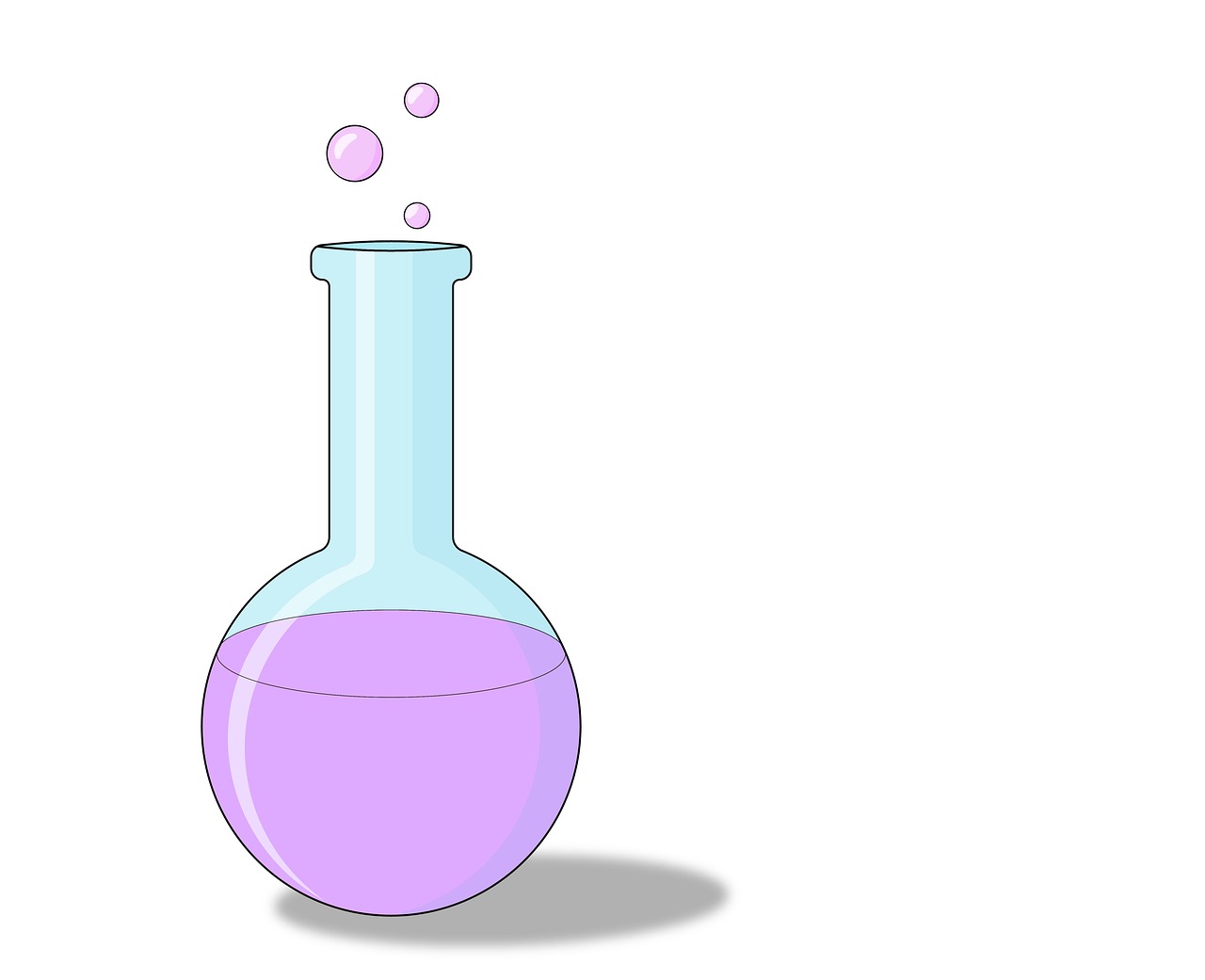
Simple Chemical Experiments
When it comes to learning chemistry at home, simple chemical experiments can be a delightful way to engage students and ignite their curiosity. These experiments often require only common household items, making them accessible and easy to conduct. Imagine transforming your kitchen into a mini laboratory, where the wonders of science come alive right before your eyes!
For instance, one classic experiment is the baking soda and vinegar reaction. This simple yet explosive reaction demonstrates the principles of acid-base interactions. When combined, these two ingredients produce carbon dioxide gas, which creates a fizzy eruption. Not only is this experiment visually exciting, but it also provides an opportunity to discuss chemical reactions and the concept of gases. Here’s how you can do it:
Ingredients: - 1 tablespoon of baking soda - 1/2 cup of vinegar - A container (like a small bottle or cup)
Simply add the baking soda to the container, then pour in the vinegar and watch the magic unfold! This experiment can lead to discussions about chemical equations, the properties of acids and bases, and even the practical applications of these reactions in everyday life.
Another engaging experiment involves making a homemade pH indicator using red cabbage. This experiment not only introduces students to the concept of pH but also allows them to explore the vibrant world of natural indicators. To create this indicator, follow these steps:
Ingredients: - 1/2 head of red cabbage - Water - Various household liquids (like lemon juice, soap, and vinegar)
Start by chopping the red cabbage and boiling it in water for about 15 minutes. Once the cabbage is strained out, the resulting liquid will be a beautiful purple color. This liquid acts as a pH indicator. By adding different household liquids to the cabbage juice, students can observe color changes that indicate whether a substance is acidic or basic. This experiment opens up discussions about the pH scale and its significance in both chemistry and biology.
Safety is a crucial aspect of conducting experiments at home. Always ensure that students wear safety goggles and gloves when necessary, especially when handling acids or bases. It's essential to create a safe environment where students can explore without fear of accidents.
In addition to these experiments, students can also explore the concept of mixtures and solutions. A fun way to do this is by creating a simple saltwater solution. By dissolving salt in water, students can learn about solubility and saturation. They can experiment with different amounts of salt and observe how it affects the solution. This hands-on approach not only solidifies their understanding of chemical principles but also enhances their observational skills.
These simple chemical experiments not only make learning fun but also foster a sense of wonder and excitement about science. By engaging in hands-on activities, students can grasp complex concepts in a tangible way, making the world of chemistry less intimidating and more approachable.
- What materials do I need for these experiments? Most of the materials are common household items like baking soda, vinegar, and red cabbage.
- Are these experiments safe for children? Yes, as long as proper safety measures are followed, such as wearing goggles and gloves.
- Can I conduct these experiments with my younger children? Absolutely! Just ensure that an adult supervises the experiments to guide them safely.

Safety in Home Chemistry
When diving into the exciting world of home chemistry, safety should always be your top priority. Just like a superhero wouldn’t rush into battle without their cape, you shouldn’t embark on your chemistry adventures without the right precautions. Understanding and implementing safety measures not only protects you and your family but also enhances the learning experience. Imagine conducting a thrilling experiment, only to have it overshadowed by a safety mishap; that’s not the kind of explosion we’re aiming for!
First and foremost, it’s essential to have a clear understanding of the materials you are using. Many household items can be safely transformed into exciting experiments, but some can be hazardous if not handled properly. For instance, mixing certain substances can produce dangerous reactions. Therefore, always read labels and research the properties of the chemicals you plan to use. It’s like knowing the strengths and weaknesses of your favorite superhero before sending them into action!
Here are some key safety tips to keep in mind:
- Wear Protective Gear: Always wear safety goggles to protect your eyes from splashes, and consider using gloves to avoid skin contact with any potentially harmful substances.
- Work in a Well-Ventilated Area: Ensure that your experiment space is well-ventilated. Open windows or work outside when possible to avoid inhaling fumes.
- Keep a First Aid Kit Handy: Accidents can happen, so it’s wise to have a first aid kit within reach, just in case.
- Have an Adult Supervise: If you’re a student, make sure an adult is present during experiments. They can help guide you and ensure that safety protocols are followed.
Additionally, it’s crucial to have a plan for emergencies. Just as a fire drill prepares you for the unexpected, having a clear understanding of what to do in case of an accident can make all the difference. This might include knowing how to properly extinguish a small fire or how to clean up a spill safely. Always remember: better safe than sorry!
In conclusion, home chemistry can be an exhilarating journey filled with discovery and learning. By prioritizing safety, you set the stage for not just a fun experience, but also a responsible one. So, gather your materials, don your safety gear, and get ready to explore the marvelous world of chemistry—all while keeping safety at the forefront!
Q1: What should I do if I accidentally spill a chemical?
A1: Stay calm! First, ensure that everyone is safe and move away from the spill. If it’s a small spill, you can carefully clean it up using appropriate materials (like paper towels or absorbent cloths) while wearing gloves. For larger spills, consult the material safety data sheet (MSDS) for specific instructions or contact a professional.
Q2: Are all household items safe for experiments?
A2: Not all household items are safe. Always research the materials you want to use and check for any potential hazards. Common items like vinegar and baking soda are generally safe, but others may not be.
Q3: Can I conduct chemistry experiments outside?
A3: Yes, conducting experiments outside can be a great idea, especially for those that produce fumes or require good ventilation. Just be sure to choose a safe, controlled area away from flammable materials!

Exploring Everyday Chemistry
Everyday chemistry is not just a subject confined to the classroom; it’s a vibrant part of our daily lives that we often overlook. From the moment you wake up and brew your morning coffee to the time you wash your dishes after dinner, you are engaging in countless chemical reactions. Understanding this can transform mundane tasks into exciting learning opportunities for students and parents alike.
For instance, consider the process of cooking. When you bake a cake, you’re not just mixing ingredients; you’re initiating a series of chemical reactions. The baking soda reacts with the acid in the batter, producing carbon dioxide gas that helps the cake rise. This simple act can serve as a practical lesson in acid-base reactions and gas production. By involving children in the kitchen, you can teach them about the chemistry behind cooking while enjoying a delicious treat.
Cleaning is another area rich with chemical interactions. Most household cleaners contain chemicals designed to break down dirt and grime. For example, vinegar and baking soda create a fizzy reaction that can help unclog drains or clean surfaces. Discussing the properties of these substances, such as their acidity or alkalinity, can provide insights into why certain cleaners are more effective than others. This hands-on experience not only makes learning fun but also emphasizes the importance of chemistry in maintaining a healthy home environment.
Moreover, gardening provides a fantastic opportunity to explore the chemistry of soil and plant growth. Soil is a complex mixture of minerals, organic matter, and microorganisms, all of which play a crucial role in supporting plant life. By testing soil pH or experimenting with different fertilizers, students can learn about nutrient cycles and the chemical processes that sustain life. Engaging in these activities fosters a deeper appreciation for the environment and the chemical interactions that occur within it.
In summary, everyday chemistry is all around us, waiting to be discovered. By integrating these practical experiences into home learning, parents can spark curiosity and enhance understanding of chemical principles. Whether through cooking, cleaning, or gardening, the possibilities for exploration are endless. So, why not turn your home into a chemistry lab and watch as your child’s fascination with science grows?
- What are some simple chemistry experiments I can do at home? You can try baking soda and vinegar volcanoes, making slime, or observing rust formation on iron.
- Is it safe to conduct chemistry experiments at home? Yes, as long as you follow safety guidelines and use non-toxic materials.
- How can I make chemistry more fun for my kids? Incorporate everyday activities like cooking and cleaning, and encourage them to ask questions and explore.
- What resources are available for learning about chemistry at home? There are many online platforms offering interactive lessons, videos, and virtual labs that can enhance your learning experience.
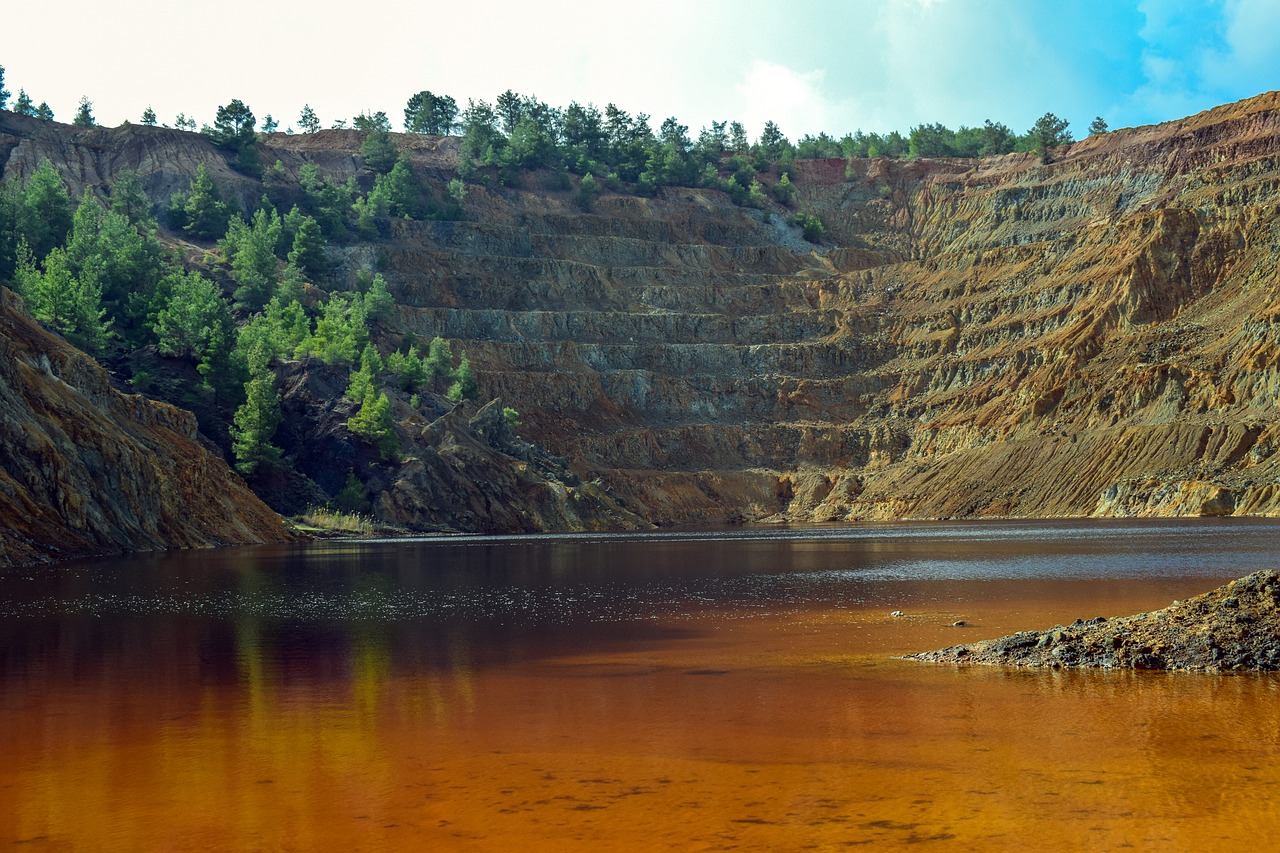
Understanding Chemical Reactions
Understanding chemical reactions is like unlocking a secret door to the universe. Every time you mix ingredients in the kitchen or even when you breathe, you're witnessing these fascinating processes in action! A chemical reaction occurs when substances, known as reactants, interact to form new substances called products. This transformation can be as simple as baking a cake or as complex as the reactions powering the stars. By diving into the world of chemical reactions, students can gain a deeper appreciation of the science that surrounds them daily.
There are several types of chemical reactions, each with its own unique characteristics and examples. Here’s a brief overview:
- Synthesis Reactions: This is when two or more reactants combine to form a single product. Think of it like assembling a puzzle where all the pieces come together to create a beautiful picture.
- Decomposition Reactions: In this type, a single compound breaks down into two or more simpler products. It's akin to a sandcastle being washed away by the tide, leaving just the grains of sand behind.
- Single Replacement Reactions: Here, one element replaces another in a compound. Imagine a dance where one partner steps out, and another steps in!
- Double Replacement Reactions: This occurs when the ions of two compounds exchange places in an aqueous solution. It’s like a swap meet where everyone goes home with something new!
- Combustion Reactions: These reactions involve a substance combining with oxygen, producing heat and light. Think of a campfire crackling, where wood combines with oxygen to create warmth and light.
Understanding these types of reactions not only enhances scientific literacy but also connects students to real-world phenomena. For instance, when cooking, students can observe how heat changes the structure of food, leading to the delicious meals we enjoy. Similarly, when they see rust forming on iron, they are witnessing oxidation—a type of chemical reaction that can be explained through simple scientific principles.
To further illustrate the concept of chemical reactions, let’s explore a simple experiment that can be conducted at home. By mixing vinegar and baking soda, students can observe a classic acid-base reaction. This reaction produces carbon dioxide gas, which creates the fizzing effect. Here’s a quick table summarizing the reactants and products:
| Reactants | Products |
|---|---|
| Vinegar (Acetic Acid) | Carbon Dioxide + Water + Sodium Acetate |
| Baking Soda (Sodium Bicarbonate) |
Through such experiments, students can visualize the transformation that takes place, reinforcing their understanding of chemical reactions. As they observe the bubbling and fizzing, they are not just having fun; they are engaging in a fundamental aspect of science that explains how substances interact in our world.
In conclusion, understanding chemical reactions is crucial for students as it lays the groundwork for more advanced scientific concepts. It encourages them to ask questions, explore their surroundings, and appreciate the intricate dance of molecules that occurs every day. So, the next time you whip up a meal or notice a change in your environment, remember: you're witnessing chemistry in action!
Q1: What is a chemical reaction?
A chemical reaction is a process where substances (reactants) interact to form new substances (products), involving the breaking and forming of chemical bonds.
Q2: Can I observe chemical reactions at home?
Absolutely! Many everyday activities, like cooking or cleaning, involve chemical reactions. Simple experiments, such as mixing vinegar and baking soda, can also be safely conducted at home.
Q3: Are all chemical reactions visible?
No, not all chemical reactions are visible. Some reactions occur at the molecular level and may not produce noticeable changes, while others, like combustion, are very apparent.
Q4: How can I learn more about chemical reactions?
There are numerous resources available, including online courses, educational videos, and science books that delve deeper into the fascinating world of chemistry.

Diving into Biology
Diving into the world of Biology at home opens up a treasure trove of learning opportunities that can captivate the minds of students and foster a deeper connection with the living world. From the tiniest microorganisms to the vast ecosystems that cover our planet, biology encompasses everything that makes life possible. One of the most exciting aspects of studying biology is that it is all around us. Whether you’re observing the growth of a plant in your backyard or examining the intricacies of human anatomy, there’s always something new to discover.
One engaging way to learn about biology is through gardening. Not only does gardening provide hands-on experience with plant biology, but it also teaches students about ecosystems and environmental science. As you dig your hands into the soil, you’re not just planting seeds; you’re also learning about photosynthesis, plant growth, and the importance of biodiversity. Imagine watching a seed sprout into a plant, understanding how it relies on sunlight, water, and nutrients from the soil. This process can ignite a passion for nature and science in young learners.
Another fascinating area of biology is human anatomy and health. Studying how our bodies work can empower students to make informed choices about their nutrition and wellness. For instance, understanding how the heart pumps blood or how the digestive system processes food can lead to better lifestyle choices. To make this subject even more engaging, you can use resources like anatomy apps or online videos that provide interactive visuals of the human body. This way, students can explore their own anatomy in a fun and informative manner.
To enhance the learning experience, consider integrating a few practical activities that can reinforce biological concepts:
- Nature Walks: Take a stroll in your local park or garden and observe different plants and animals. Encourage students to take notes on their observations.
- Plant Experiments: Grow different types of plants in varying conditions (light, water, soil types) to see how they respond.
- Anatomy Models: Create simple models of human organs using clay or other materials to visualize their structure and function.
By engaging in these activities, students not only learn about biological concepts but also develop a sense of responsibility towards the environment. They begin to understand the interconnectedness of life and the importance of preserving our planet's resources.
As we dive deeper into biology, it’s essential to recognize the role of technology in enhancing our understanding. There are numerous online resources and apps that offer interactive lessons on various biological topics, from genetics to ecology. These tools can make complex concepts more accessible and engaging, allowing students to explore biology in a way that suits their learning style.
In conclusion, diving into biology at home is not just about memorizing facts; it's about fostering a love for science and understanding the world around us. By exploring topics like gardening and human anatomy, students can develop critical thinking skills and a sense of curiosity that will last a lifetime. So, what are you waiting for? Grab a plant, take a nature walk, or dive into an anatomy app, and let the adventure of biology begin!
Here are some common questions that parents and students might have about exploring biology at home:
- What are some easy biology experiments I can do at home? You can try growing plants from kitchen scraps, observing mold growth on bread, or creating a simple ecosystem in a jar.
- How can I make biology fun for my child? Use games, interactive apps, and hands-on activities to make learning engaging and enjoyable.
- Are there online resources for learning biology? Yes, many websites and platforms offer free resources, videos, and interactive lessons on various biology topics.
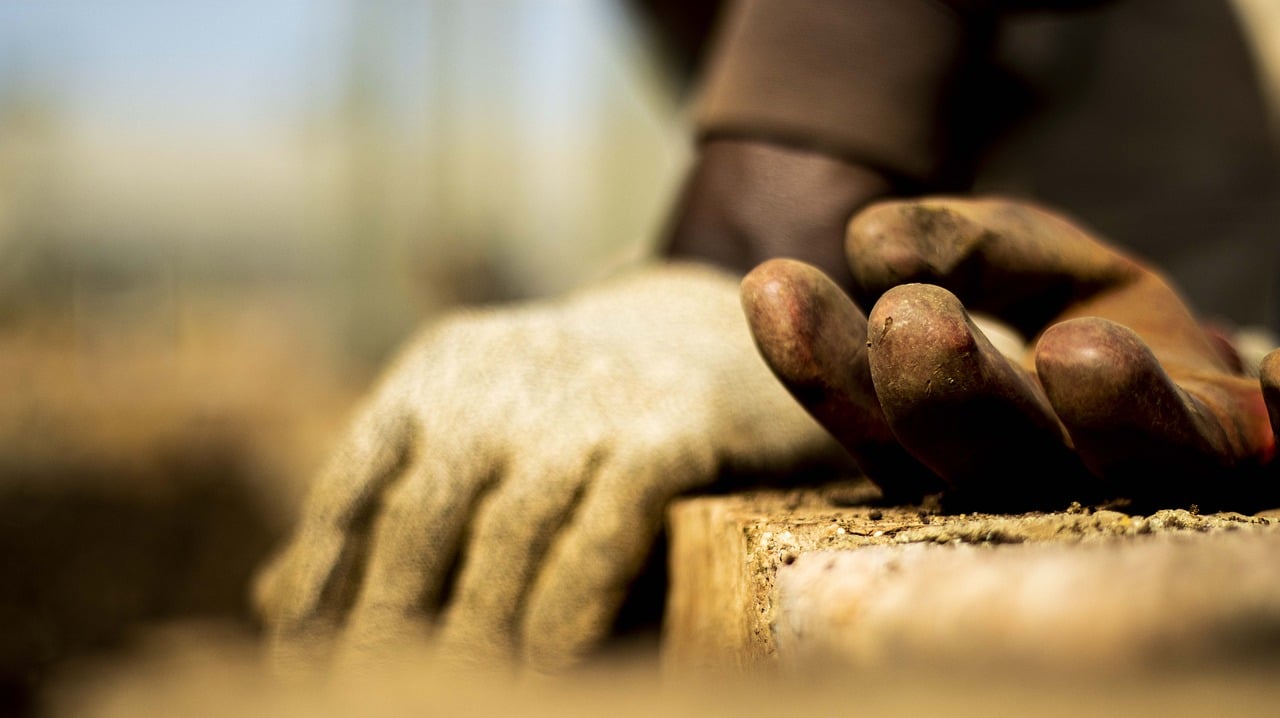
Gardening as a Learning Tool
Gardening is not just about planting seeds and watching them grow; it's a dynamic learning experience that can ignite a passion for biological sciences in students of all ages. When children dig their hands into the soil, they are not only engaging with nature but also discovering the intricate relationships between plants, soil, and ecosystems. This hands-on activity can serve as a powerful educational tool, offering lessons in botany, ecology, and even nutrition.
One of the most exciting aspects of gardening as a learning tool is the opportunity it provides for experimentation. Students can observe how different plants react to various conditions such as sunlight, water, and soil types. This allows them to formulate hypotheses and test their ideas in real-time, much like scientists in a lab. For instance, they might wonder, "What happens if I plant this tomato seed in shade versus full sun?" Such questions lead to valuable insights about plant biology and the environment.
Moreover, gardening can be a gateway to understanding ecosystems. By creating a small garden, students can witness firsthand how plants interact with insects, birds, and other wildlife. They can learn about the roles of pollinators and the importance of biodiversity, fostering a sense of responsibility towards the environment. In this way, gardening becomes a microcosm of larger ecological principles, making abstract concepts more tangible.
In addition to scientific knowledge, gardening also teaches practical skills such as patience, responsibility, and the importance of nurturing living things. As students tend to their plants, they learn about the cycles of growth and decay, which can lead to deeper discussions about sustainability and environmental stewardship. They can keep a garden journal to document their observations, growth patterns, and even challenges they encounter, enhancing their critical thinking and problem-solving abilities.
To further enrich the learning experience, parents can integrate lessons about nutrition and healthy eating into gardening activities. By growing their own vegetables and herbs, students can connect the dots between food production and their diets. This not only promotes healthier eating habits but also encourages a greater appreciation for where food comes from. Imagine the joy of picking fresh basil for a pasta dish or harvesting carrots for a salad; these experiences can transform the way children view food and nutrition.
In summary, gardening is a multifaceted educational tool that offers an array of learning opportunities. From understanding plant biology and ecosystems to developing life skills and promoting healthy eating, the benefits are vast. So, whether you have a spacious backyard or just a few pots on a windowsill, consider embarking on a gardening adventure. It could be the start of a lifelong love for science and nature!
- What age is appropriate to start gardening? Gardening can start as early as preschool age, with simple tasks like planting seeds or watering plants.
- What are some easy plants for beginners? Consider starting with herbs like basil or mint, or vegetables like radishes and lettuce, which are quick to grow.
- How can gardening be integrated into school curriculums? Schools can create garden clubs or incorporate gardening into science classes, allowing students to learn through hands-on experiences.
- What are the benefits of gardening for children? Gardening helps develop responsibility, patience, and a connection to nature, while also teaching valuable scientific concepts.

Human Anatomy and Health
Understanding human anatomy and health is like embarking on a thrilling journey inside our own bodies. It’s not just about memorizing names of bones or organs; it’s about discovering how these parts work together to keep us alive and thriving. When students dive into this subject at home, they can unlock a wealth of knowledge that empowers them to make informed choices about their health and well-being.
One engaging way to explore human anatomy is through interactive resources and tools. For instance, there are numerous online platforms and apps that offer 3D models of the human body. These tools allow students to visualize and manipulate anatomical structures, making learning both fun and effective. Imagine rotating a model of the heart, seeing how blood flows through it, or understanding the intricate connections between different systems!
Moreover, students can enhance their learning experience by conducting simple experiments or activities at home. For example, they might:
- Keep a food diary to track their nutritional habits and understand the importance of balanced diets.
- Engage in physical activities and monitor their heart rate to learn about the cardiovascular system.
- Explore the impact of different exercises on muscle groups through simple workouts.
These activities not only solidify their understanding of anatomy but also foster a sense of responsibility towards their health. By learning about the functions of various organs, such as the lungs or liver, students can appreciate how their lifestyle choices affect their overall well-being. For instance, understanding how the respiratory system works can motivate them to avoid smoking or to engage in activities that promote lung health.
Additionally, incorporating discussions about mental health into the study of human anatomy is crucial. The brain, as the control center of the body, plays a significant role in our emotional and cognitive functions. Students can explore how stress, diet, and exercise influence mental well-being. This holistic approach to learning about anatomy encourages them to consider both physical and mental health as interconnected aspects of overall wellness.
To further enrich their understanding, students can create a health journal where they document their findings, experiences, and reflections on what they learn about human anatomy and health. This practice not only boosts retention but also encourages critical thinking as they analyze how their body works in response to different stimuli.
In conclusion, studying human anatomy and health at home opens up a world of possibilities for students. It empowers them to take charge of their health, fosters curiosity about the human body, and lays the groundwork for a lifetime of informed decision-making. As they explore this fascinating subject, they’ll find that knowledge truly is power!
Q: What are some good resources for learning about human anatomy at home?
A: There are many online platforms, such as Visible Body and InnerBody, which provide interactive 3D models of the human body. Additionally, educational YouTube channels offer insightful videos on anatomy and health topics.
Q: How can I incorporate anatomy studies into my daily routine?
A: You can start by observing your body during different activities. For instance, while exercising, take note of how your muscles work. Keeping a health journal and noting how different foods affect your energy levels can also be insightful.
Q: Is it safe to conduct anatomy-related experiments at home?
A: Yes, as long as the activities are safe and appropriate. Simple activities like measuring heart rate or tracking dietary habits pose no risk. Always ensure that any experiments are conducted under supervision if necessary.

Exploring Earth Sciences
Earth sciences encompass a vast array of disciplines, including geology, meteorology, and environmental science. These fields provide a comprehensive understanding of our planet's systems and the intricate relationships between its components. By exploring earth sciences at home, students can develop a profound appreciation for the natural world while learning about critical issues such as climate change, resource management, and sustainable living. Imagine diving into the layers of the Earth like a geologist, or observing the sky like a meteorologist—each day offers a new opportunity to uncover the secrets of our planet.
One of the most exciting ways to engage with earth sciences is through weather observation projects. Students can track daily weather patterns, learn about different meteorological phenomena, and even create their own weather forecasts. This hands-on approach not only makes learning fun but also instills a sense of responsibility regarding the environment. For instance, students can keep a weather journal where they record temperature, precipitation, and wind speeds, allowing them to visualize changes over time and understand the factors influencing weather.
In addition to weather, geology is another fascinating branch of earth sciences that can be explored at home. Students can start a rock collection, gathering samples from their backyard or local parks. Each rock tells a story of the Earth's history, from the processes of erosion to the formation of sedimentary layers. By examining these rocks, students can learn about the rock cycle, types of rocks, and even the geological history of their region. This hands-on exploration fosters critical thinking as they analyze their findings and draw connections to broader geological concepts.
To deepen their understanding, students can also engage in discussions about environmental science. Topics such as conservation, pollution, and climate change are increasingly relevant in today's world. Families can participate in local clean-up efforts or start a recycling program at home, allowing students to see the impact of their actions on the environment. By integrating practical activities with scientific learning, students can develop a sense of stewardship and responsibility towards their planet.
As we explore earth sciences, it’s crucial to highlight the importance of integrating technology into our learning experiences. There are numerous online resources and apps that provide interactive lessons, simulations, and virtual field trips that can enhance students' understanding of complex earth science concepts. For example, platforms like Google Earth allow students to explore different geological formations and ecosystems around the globe, making learning more engaging and accessible.
In summary, exploring earth sciences at home can be an enriching experience for students. Whether it's through weather observation, rock collecting, or engaging with environmental issues, there are countless opportunities to learn and grow. By fostering curiosity and encouraging hands-on activities, we can inspire the next generation of scientists to appreciate and protect our beautiful planet.
- What are the main branches of earth sciences? Earth sciences primarily include geology, meteorology, oceanography, and environmental science.
- How can I start learning about earth sciences at home? You can begin by observing the weather, collecting rocks, or researching local environmental issues. There are also many online resources available.
- Why is it important to study earth sciences? Studying earth sciences helps us understand the planet's processes, the effects of human activity on the environment, and the importance of sustainability.
- Are there any fun activities for kids to learn about earth sciences? Yes! Activities like gardening, creating a weather journal, or even visiting natural parks can make learning about earth sciences enjoyable and interactive.

Weather Observation Projects
Weather observation projects are an exciting way for students to dive into the fascinating world of meteorology right from the comfort of their homes. By engaging in these projects, learners can develop a deeper understanding of weather patterns, climate change, and the importance of forecasting. Imagine standing at your window, notebook in hand, and watching the clouds roll by, all while learning to predict the weather like a seasoned meteorologist!
To get started, students can create a simple weather journal where they record daily observations. This journal can include details such as temperature, humidity, wind speed, and types of clouds. Over time, they can analyze this data to identify patterns and trends. For example, they might notice that certain cloud types often precede rainy days. This hands-on approach not only makes learning fun but also instills a sense of responsibility and curiosity about the natural world.
Another engaging project involves creating a homemade weather station. With just a few household items, students can measure temperature with a thermometer, wind speed with a simple anemometer made from a plastic bottle and straws, and even rainfall with a rain gauge. Here’s a quick overview of how to make a basic rain gauge:
| Materials Needed | Instructions |
|---|---|
| Plastic bottle (cut in half) | Cut the bottle in half to create the gauge. Invert the top half into the bottom half. |
| Marker | Mark measurements on the side of the bottle to track rainfall. |
| Stakes or rocks | Secure the rain gauge outside to prevent it from blowing away. |
Additionally, students can participate in community science projects, such as reporting local weather conditions to national meteorological organizations. This not only enhances their learning experience but also contributes valuable data that helps scientists study climate patterns and weather phenomena.
Encouraging students to explore the science behind weather can ignite a passion for learning. By asking questions like, "Why does it rain?" or "What causes a tornado?" students can engage in research and discussions that deepen their understanding. Moreover, these projects can be tailored to different age groups, making them suitable for a wide range of learners.
In conclusion, weather observation projects are not just educational; they are a gateway to developing critical thinking and analytical skills. Whether it’s through journaling, building instruments, or participating in community science, students will find themselves captivated by the ever-changing skies above them. So, grab your notebooks and start observing—who knows what weather wonders you’ll discover!
- What materials do I need for a weather observation project?
Basic materials include a notebook, a thermometer, a ruler for measuring rainfall, and any household items to create simple weather instruments. - How can I make my weather observation project more engaging?
Incorporate technology by using weather apps or websites for real-time data and comparisons. You can also involve family members in the observations. - What age group is suitable for weather observation projects?
These projects can be adapted for all ages, from young children learning basic concepts to older students conducting more complex analyses.
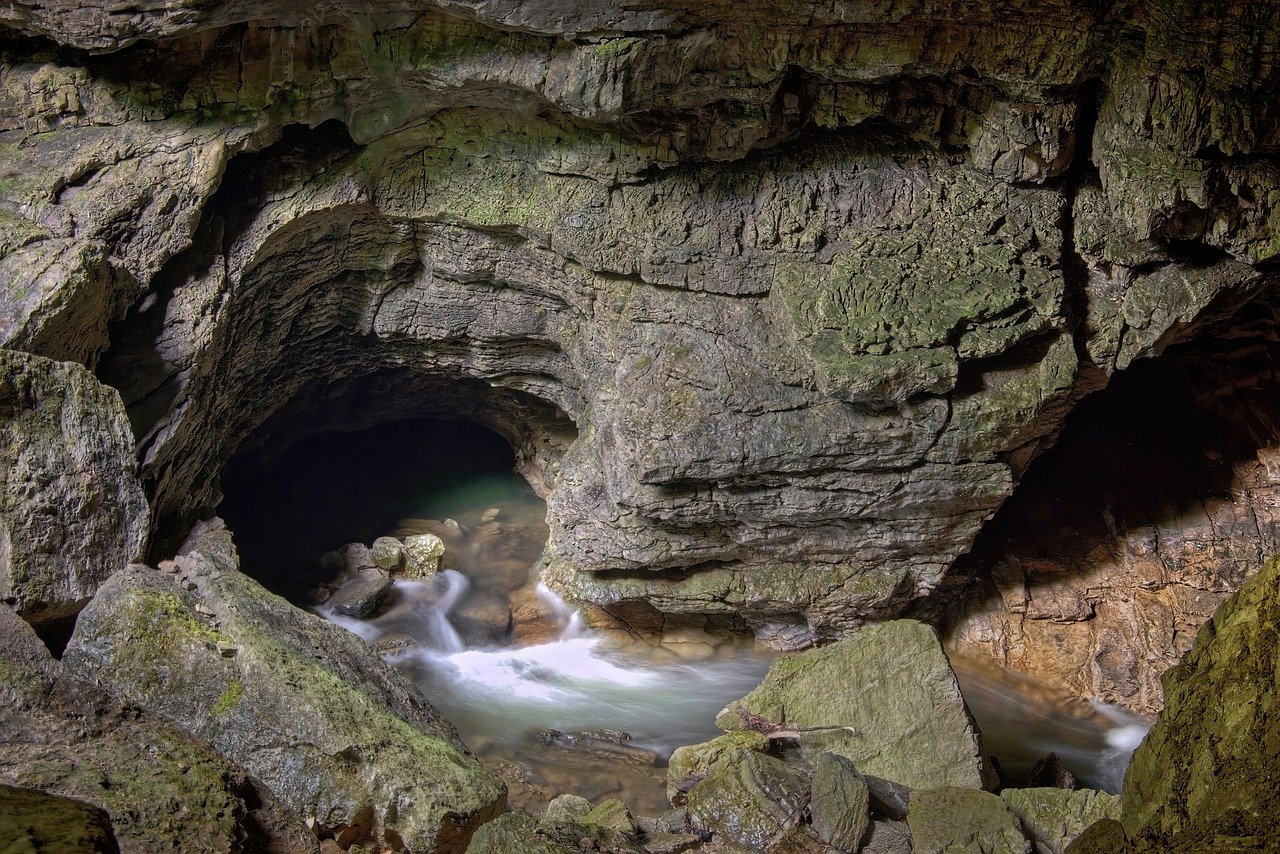
Geology at Home
Exploring can be an exciting adventure that not only enhances your understanding of Earth’s processes but also allows you to engage with your environment in a meaningful way. Imagine stepping outside and discovering the incredible stories that rocks and soil can tell! By examining local geology, you can learn about erosion, sedimentation, and even the rock cycle. It’s like being a detective, piecing together clues from the natural world.
One of the best ways to start your geological journey is by creating a rock collection. Gather various types of rocks and minerals from your neighborhood or on hikes. You can categorize them based on their properties, such as color, texture, and hardness. This hands-on activity not only makes geology tangible but also helps develop critical thinking skills as you analyze and compare different specimens.
Consider setting up a simple rock identification table to keep track of your findings. Here’s a basic template you can use:
| Rock Name | Type | Color | Texture | Notes |
|---|---|---|---|---|
| Granite | Igneous | Gray, speckled | Coarse | Common in mountains |
| Shale | Sedimentary | Gray, brown | Fine | Formed from compacted mud |
| Slate | Metamorphic | Dark gray | Smooth | Used for roofing |
As you collect and categorize your rocks, you’ll start to notice patterns and connections that deepen your understanding of geology. For instance, you might find that certain rocks are more prevalent in specific areas, hinting at the geological history of your region. You could even research the geological timeline of your area to understand the processes that shaped it over millions of years.
Another engaging activity is to explore the concept of the rock cycle. You can create a visual representation using diagrams or even craft a 3D model with clay or paper. This hands-on approach helps solidify your understanding of how rocks transform from one type to another through processes like melting, cooling, and erosion. It’s like watching a never-ending story unfold right in your backyard!
Lastly, don't forget to observe the landforms around you. Whether it's hills, valleys, or rivers, each feature has its own geological story. Take notes on how these landforms interact with weather patterns and human activity. This observation can lead to fascinating discussions about environmental science and the importance of conservation.
- What materials do I need to start a rock collection? You’ll need a small bag for collecting rocks, a notebook for notes, and a camera to document your finds!
- How can I learn more about local geology? Visit local museums, read books on geology, or join community groups focused on geology and nature.
- Are there any safety precautions I should take? Always wear gloves when handling rocks, especially if you are unsure of their composition, and be cautious of sharp edges.

Integrating Technology in Science Learning
In this digital age, integrating technology in science learning has become not just beneficial but essential. Imagine a world where students can explore complex scientific concepts without the constraints of traditional learning methods. With the right tools, the wonders of science can be brought to life right in your living room! From online simulations to interactive apps, technology serves as a bridge, making abstract ideas tangible and exciting.
One of the most significant advantages of using technology in science education is the access it provides to a plethora of resources. Students can dive into interactive simulations that allow them to visualize processes like photosynthesis or chemical reactions in real-time. For instance, platforms like LabXchange offer virtual labs where students can conduct experiments safely and effectively. This not only enhances understanding but also sparks a curiosity that traditional textbooks often fail to ignite.
Moreover, technology fosters collaboration among students. With tools like Google Classroom or Edmodo, learners can share their findings, discuss experiments, and even work on group projects from the comfort of their homes. This collaborative approach encourages peer-to-peer learning, where students can learn from each other's insights and perspectives. It’s akin to having a virtual science fair every day!
To further enrich the learning experience, many educators have begun to incorporate virtual reality (VR) into their science curricula. Imagine putting on a VR headset and stepping into the heart of a volcano or exploring the depths of the ocean! Such immersive experiences provide students with a first-hand look at the wonders of our planet and beyond, making the learning process memorable and impactful.
Another exciting aspect of integrating technology in science learning is the use of data analysis tools. Students can collect data from their experiments and use software like Excel or Google Sheets to analyze their results. This not only teaches them how to interpret data but also equips them with valuable skills that are essential in today’s data-driven world.
However, while technology opens up numerous avenues for learning, it’s crucial to ensure that students are using these tools effectively. Here are some tips for parents and educators:
- Encourage Exploration: Allow students to explore various online resources and tools that pique their interest.
- Set Boundaries: Monitor the time spent on technology to ensure a balanced approach to learning.
- Discuss Findings: Engage in discussions about what they learn through technology to reinforce understanding.
In conclusion, integrating technology into science learning not only enhances the educational experience but also prepares students for a future where tech-savvy skills are paramount. By embracing these tools, we can cultivate a generation of inquisitive minds ready to tackle the scientific challenges of tomorrow.
Q1: How can technology improve my child's understanding of science?
A1: Technology provides interactive and engaging resources that can make complex scientific concepts easier to understand. Tools like simulations and virtual labs allow students to visualize and experiment with scientific principles in a safe environment.
Q2: Are there any specific apps or websites you recommend for science learning?
A2: Absolutely! Websites like Khan Academy and LabXchange offer fantastic resources for students of all ages. Additionally, apps like Science Journal by Google can help students document their experiments and observations.
Q3: Is it safe for children to conduct experiments online?
A3: Yes, many virtual labs and simulations are designed to be safe and educational. However, it's essential for parents to supervise younger children and ensure that they are using reputable platforms.

Using Online Resources
In today's digital age, the world of science learning has transformed dramatically, thanks to the vast array of online resources available. Imagine having a virtual science lab at your fingertips, where you can explore everything from the intricacies of chemical reactions to the vastness of the universe—all from the comfort of your home! This accessibility not only makes science more engaging but also caters to various learning styles, ensuring that every student can find something that resonates with them.
One of the most exciting aspects of using online resources is the sheer variety of platforms available. Websites like Khan Academy and edX offer comprehensive courses that cover a multitude of scientific disciplines. These platforms provide interactive lessons, quizzes, and even video tutorials that break down complex concepts into digestible pieces. For instance, if a student is struggling with understanding the laws of motion in physics, they can watch a series of videos that visually demonstrate these principles in action, making learning not just informative but also visually stimulating.
Moreover, there are specialized websites dedicated to specific branches of science. For example, NASA provides a treasure trove of resources for students interested in astronomy and space science. Through interactive simulations and virtual tours of space missions, students can immerse themselves in the wonders of the cosmos, sparking their curiosity and encouraging them to ask deeper questions about the universe. Similarly, platforms like Science Buddies offer a plethora of project ideas and experiment guides that utilize common household items, making science accessible and fun.
In addition to structured courses and project ideas, many online resources also foster a sense of community. Forums and discussion boards allow students to connect with peers and educators, share their findings, and seek help when needed. This collaborative environment not only enhances learning but also builds confidence as students realize they are part of a larger scientific community. Engaging with others can lead to exciting discussions, new insights, and even collaborative projects that deepen their understanding of scientific concepts.
Furthermore, the integration of virtual simulations is revolutionizing the way students conduct experiments. Websites like PhET Interactive Simulations provide students with the opportunity to run experiments in a safe, controlled environment. These simulations allow students to manipulate variables and observe outcomes in real-time, making abstract concepts more concrete. For instance, a student can simulate the effects of different forces on an object’s motion, gaining a hands-on understanding of Newton's laws without the need for physical materials.
As we embrace these digital tools, it’s essential to remember that while online resources are incredibly valuable, they should complement traditional learning methods rather than replace them. Combining the two can create a rich, multifaceted learning experience that caters to all aspects of a student's education. So, whether it’s watching a documentary on the human body, participating in a live virtual lab, or engaging in a science-themed online game, the possibilities are endless!
In conclusion, utilizing online resources for science learning not only enhances understanding but also makes the entire process enjoyable and interactive. The future of science education is here, and it’s more accessible than ever. So, why not dive in and explore the wealth of knowledge available online? You never know what fascinating discoveries await!
- What are some recommended online resources for science learning?
Some great platforms include Khan Academy, edX, NASA, and Science Buddies, which offer a variety of interactive lessons and projects. - Are virtual science experiments safe?
Yes! Virtual experiments allow students to explore scientific concepts without any physical risks involved. - How can I encourage my child to use online resources for science?
Introduce them to engaging websites, set up a schedule for exploration, and discuss their findings to spark curiosity.
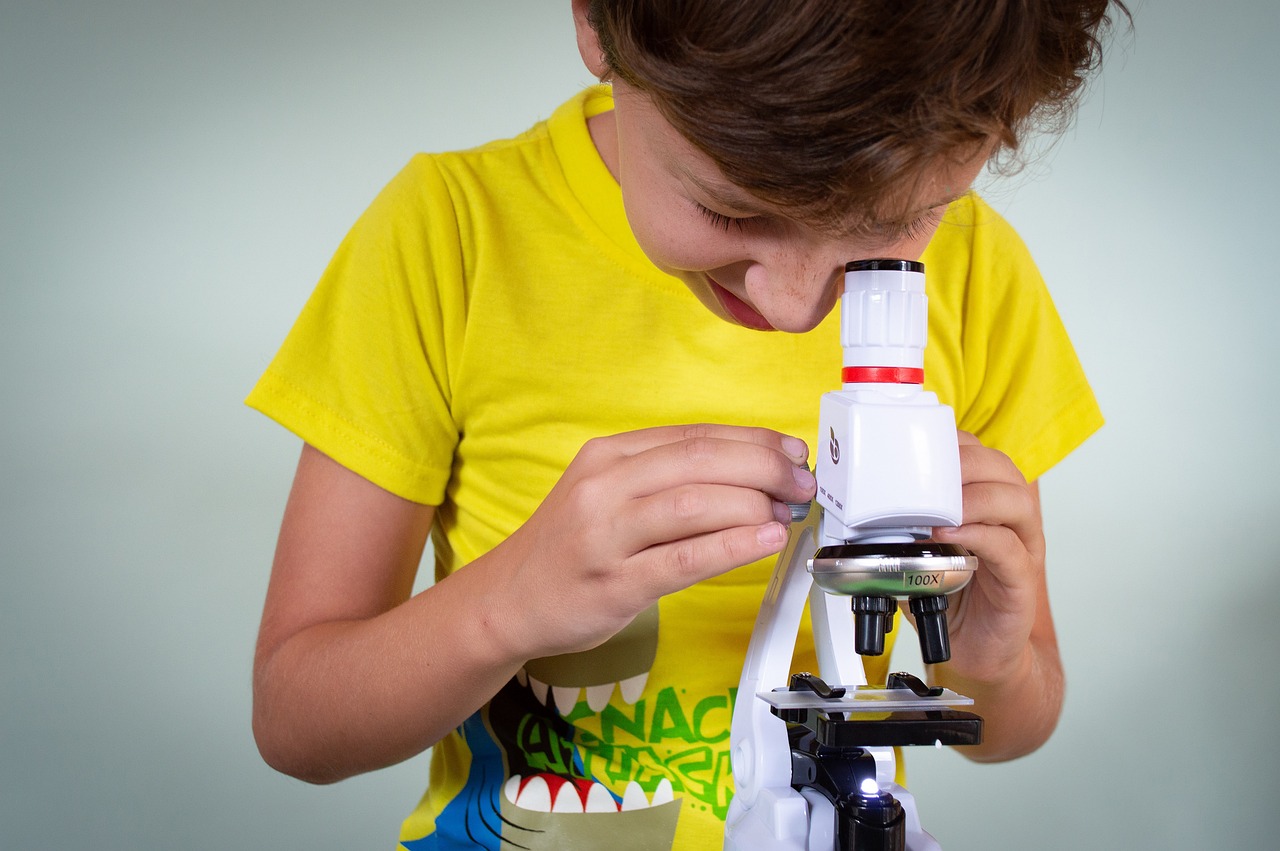
Virtual Science Experiments
Virtual science experiments have emerged as a revolutionary way for students to engage with scientific concepts from the comfort of their homes. Imagine being able to conduct a complex chemistry reaction or explore the intricacies of physics without the need for a fully stocked lab. With the advancement of technology and the availability of online platforms, students can now embark on exciting scientific journeys that were once only possible in physical classrooms.
These virtual experiments are not just about watching videos; they are interactive, allowing students to manipulate variables and see real-time results. For instance, platforms like PhET Interactive Simulations and LabXchange provide a plethora of virtual labs where students can experiment with different scientific principles. From simulating the behavior of gases under varying temperatures to exploring the effects of different wavelengths of light on plant growth, the possibilities are practically endless!
Here are some key benefits of utilizing virtual science experiments:
- Accessibility: Students can access a wide range of experiments anytime, anywhere, making learning more flexible.
- Safety: Virtual experiments eliminate the risks associated with handling hazardous materials, allowing students to learn without fear.
- Cost-Effectiveness: Schools and families can save money on expensive laboratory equipment and materials.
- Engagement: Interactive simulations captivate students' attention and make learning more enjoyable.
Moreover, virtual science experiments often come with built-in assessments that allow students to test their understanding and receive instant feedback. This immediate reinforcement can significantly enhance their learning experience. For example, after completing a virtual physics experiment on projectile motion, students can answer questions that assess their grasp of concepts such as velocity and acceleration.
As educators and parents, it’s essential to encourage students to explore these virtual resources. They not only supplement traditional learning but also foster a sense of curiosity and innovation. In a world where digital literacy is becoming increasingly important, engaging with virtual science experiments can equip students with both scientific knowledge and technological skills that are vital for their future.
In conclusion, virtual science experiments represent a fantastic opportunity for students to delve into the world of science. They break down barriers to learning and open up a universe of exploration and discovery right from home. So, why not take advantage of these resources and inspire the next generation of scientists?
Q1: What are virtual science experiments?
A1: Virtual science experiments are online simulations that allow students to conduct scientific experiments and explore concepts interactively, without the need for physical materials.
Q2: Are virtual science experiments safe?
A2: Yes! Virtual experiments eliminate the risks associated with handling real chemicals or equipment, making them a safe alternative for students.
Q3: Where can I find virtual science experiments?
A3: Many educational websites offer virtual science experiments, such as PhET Interactive Simulations, LabXchange, and ExploreLearning Gizmos.
Q4: Do virtual experiments provide instant feedback?
A4: Most platforms include assessments that allow students to test their understanding and receive immediate feedback on their performance.
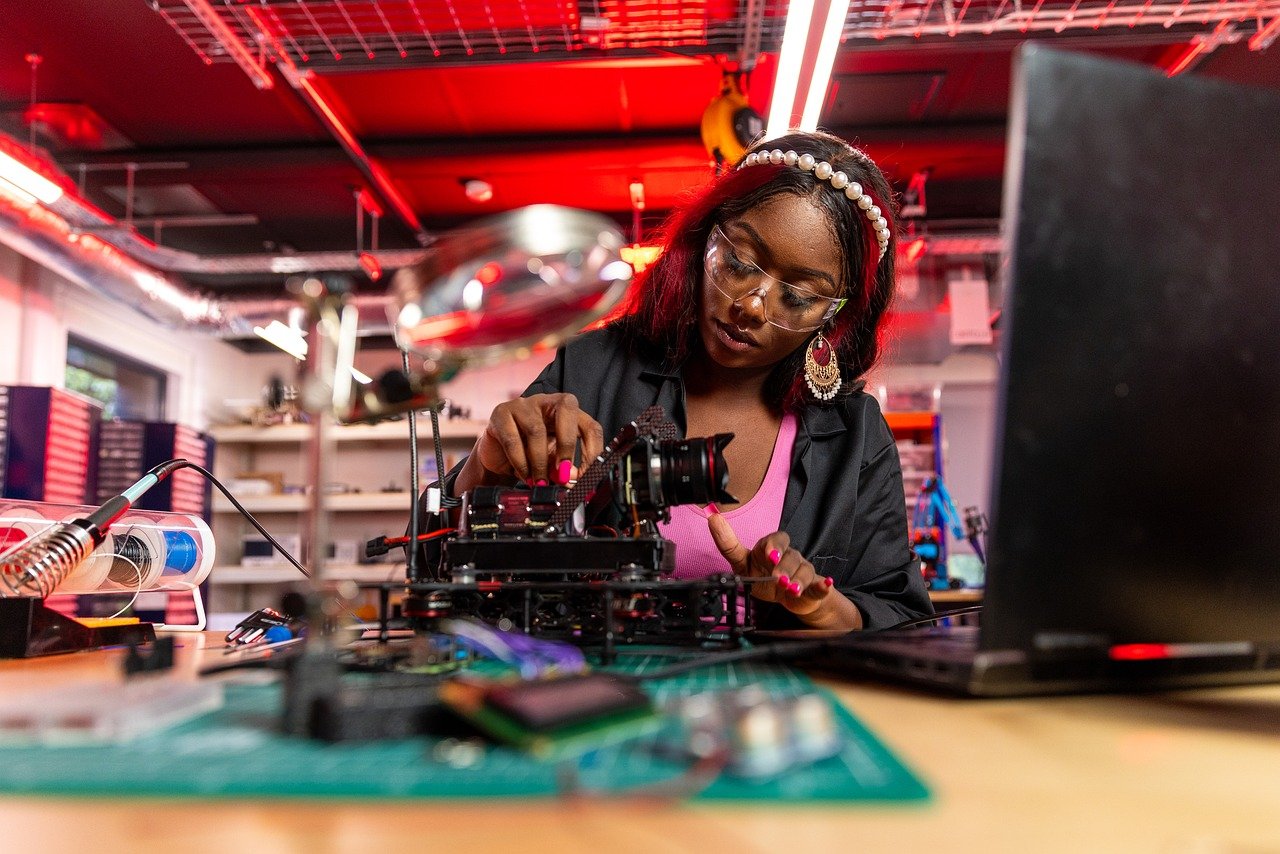
Encouraging Scientific Inquiry
Encouraging scientific inquiry is like planting a seed in the fertile ground of a young mind. When students are motivated to ask questions and seek answers, they embark on a journey of discovery that can lead to profound insights and a lifelong passion for science. But how do we cultivate this spirit of inquiry at home? It all begins with creating an environment that promotes curiosity and exploration.
One effective way to foster scientific inquiry is by encouraging students to ask questions about the world around them. Whether it’s observing a bug in the garden or pondering why the sky changes color, these everyday moments can spark a desire to learn more. Parents and educators can guide students by responding to their questions with enthusiasm and prompting them to think critically. For instance, if a child asks why leaves change color in autumn, instead of providing a quick answer, you might encourage them to research the science behind photosynthesis and chlorophyll.
Another key element is the formulation of hypotheses. After posing a question, students should be encouraged to make predictions. This process is crucial as it develops their ability to think scientifically. For example, if they wonder what happens when you mix vinegar and baking soda, they can predict that it will fizz. This not only makes the learning process interactive but also helps them understand the scientific method, which includes observation, hypothesis, experimentation, and conclusion.
Conducting simple experiments at home can be a thrilling way to put their hypotheses to the test. Here are some steps you can follow to make this process engaging:
- Choose a Question: Start with a simple question that piques their interest.
- Make a Hypothesis: Ask them to predict the outcome.
- Gather Materials: Use common household items to conduct the experiment.
- Conduct the Experiment: Follow through with the experiment and observe the results.
- Discuss Findings: Reflect on what happened and whether their hypothesis was correct.
Additionally, keeping a science journal can significantly enhance the learning experience. This journal serves as a personal record of their scientific journey, allowing them to document their experiments, observations, and reflections. It’s a space where they can express their thoughts freely, sketch diagrams, or even write down new questions that arise during their explorations. This practice not only solidifies their understanding of scientific concepts but also encourages them to think critically about their learning process.
Finally, it’s essential to create a culture of inquiry at home. This means celebrating curiosity and embracing mistakes as part of the learning journey. When students feel safe to explore and ask questions without the fear of being wrong, they are more likely to engage deeply with scientific concepts. Encourage them to explore topics that genuinely interest them, whether it’s the stars in the night sky or the microorganisms in a drop of pond water. The more they explore, the more they will learn!
Q: How can I encourage my child to ask more questions?
A: Start by modeling curiosity yourself! Show excitement when you encounter something new and ask questions aloud. Encourage your child to think critically by asking them open-ended questions about their observations.
Q: What are some simple experiments we can do at home?
A: You can try experiments like making a homemade volcano with baking soda and vinegar, growing crystals with sugar or salt, or even creating a simple circuit with a battery and a light bulb!
Q: How important is it to document experiments?
A: Documenting experiments helps reinforce learning. It allows students to track their progress, reflect on their findings, and develop their critical thinking skills.
Q: What if my child loses interest in science?
A: Keep the learning process fun and engaging. Introduce new topics, explore different areas of science, and relate them to your child’s interests. Sometimes, a change in approach or subject matter can reignite their passion!

Creating a Science Journal
Creating a science journal is an exciting way for students to document their scientific explorations and discoveries. It's like having a personal laboratory in written form, where they can jot down their thoughts, observations, and experiment results. Imagine flipping through the pages and seeing how much they've learned over time! A science journal doesn't just serve as a record; it also encourages critical thinking and reflection. Students can track their hypotheses, results, and even the questions that arise during their experiments.
To get started, all you need is a notebook or a digital platform where students can easily write and organize their entries. The key is to make it a habit. Encourage students to write in their journals regularly, perhaps after each experiment or observation. This routine not only reinforces their learning but also helps them develop a deeper connection with the scientific method.
In their journals, students can include various sections, such as:
- Hypothesis: What do they think will happen during an experiment?
- Materials Used: A list of everything they needed for their experiments.
- Procedure: Step-by-step instructions on how they conducted their experiments.
- Results: What they observed and any data they collected.
- Conclusion: Did their results support their hypothesis? What did they learn?
- Reflections: What questions do they still have? What would they do differently next time?
By organizing their entries this way, students can easily refer back to their previous work, see their progress, and identify patterns in their learning. This practice not only enhances their understanding of scientific concepts but also promotes a habit of inquiry and curiosity. Plus, it’s a fantastic way to showcase their hard work to family and friends, making science feel more personal and relatable.
Encouraging students to personalize their journals can make the process even more enjoyable. They can add drawings, photographs, or even clippings from magazines related to their experiments. This creative aspect can ignite their passion for science, making learning feel less like a chore and more like an adventure.
In summary, a science journal is an invaluable tool for home learning. It not only helps students document their scientific journey but also fosters a culture of inquiry and reflection. So, why not grab a notebook today and start recording those scientific adventures? Who knows what amazing discoveries await!
Q: What age group is suitable for starting a science journal?
A: Students of all ages can benefit from keeping a science journal. Younger children can draw pictures and write simple observations, while older students can delve into more complex topics and detailed entries.
Q: How often should students write in their science journals?
A: It's beneficial for students to write in their journals regularly, ideally after each experiment or observation. This helps reinforce their learning and keeps their scientific thinking active.
Q: Can digital platforms be used for science journals?
A: Absolutely! Digital journals can be a great option, especially for students who enjoy typing or using multimedia elements like photos and videos to document their experiments.
Q: What if a student forgets to write in their journal?
A: Encourage them to set reminders or create a routine that includes journal writing. Making it part of their learning process can help them remember.

Encouraging Questions and Exploration
Encouraging students to ask questions and explore topics of interest is like planting seeds in a garden; with the right nurturing, they can blossom into a deep understanding of scientific principles. When students feel empowered to inquire, they become active participants in their learning journey rather than passive recipients of information. This active engagement is crucial as it fosters a sense of curiosity and wonder about the world around them.
One effective way to promote inquiry is through open-ended questions. Instead of providing direct answers, parents and educators can guide students to think critically about their observations. For instance, if a child notices that a plant is wilting, instead of simply explaining why, ask them, “What do you think might be causing this?” This approach encourages them to hypothesize and seek evidence, honing their analytical skills.
Moreover, creating a supportive environment where questions are welcomed can significantly enhance a child's willingness to explore. Celebrate their curiosity by acknowledging their questions, regardless of how trivial they may seem. You might say, “That’s a great question! Let’s find out together.” This collaborative exploration not only makes learning enjoyable but also strengthens the bond between students and their mentors.
In addition, incorporating hands-on activities can further stimulate questions. For example, conducting simple experiments at home, like mixing baking soda and vinegar, can lead to a plethora of inquiries. Students might wonder, “What happens if we change the amount of vinegar?” or “Why does it fizz?” These types of experiments serve as a springboard for deeper exploration into chemical reactions and scientific principles.
To further enrich the learning experience, consider maintaining a science journal. This journal can serve as a personal space for students to document their questions, observations, and findings. They can sketch diagrams, write down hypotheses, and reflect on their learning process. Over time, this journal becomes a valuable resource that showcases their growth and understanding.
Finally, fostering a culture of exploration involves encouraging students to delve into topics that genuinely interest them. Whether it’s studying the stars, understanding ecosystems, or investigating the properties of materials, allowing them to pursue their passions can lead to remarkable discoveries. As they explore their interests, they not only learn about science but also develop critical thinking skills that are essential for problem-solving in everyday life.
- Why is asking questions important in science learning? Asking questions helps students engage deeply with the material, promotes critical thinking, and encourages them to seek out answers through exploration.
- How can I create a supportive environment for my child’s inquiries? Acknowledge and celebrate their questions, provide resources for exploration, and engage in discussions that stimulate further inquiry.
- What types of activities can promote scientific exploration at home? Hands-on experiments, gardening, nature walks, and even cooking can all serve as engaging ways to explore scientific concepts.
- How can a science journal benefit my child? A science journal allows students to document their thoughts, track their learning progress, and reflect on their experiments, enhancing their understanding of scientific concepts.
Frequently Asked Questions
- What are some easy physics experiments I can do at home?
There are plenty of fun physics experiments you can try at home! For example, you can create a simple pendulum using a string and a weight to explore the concepts of motion and gravity. Another idea is to use a balloon to demonstrate static electricity and force by rubbing it on your hair and observing how it attracts small pieces of paper. These hands-on activities make learning physics exciting and engaging!
- How can I safely conduct chemistry experiments at home?
Safety is key when conducting chemistry experiments at home! Always wear safety goggles and gloves, and ensure you're working in a well-ventilated area. Start with simple experiments using common household items, like creating a baking soda and vinegar volcano. Make sure to read instructions carefully and never mix chemicals unless you're sure it's safe. Always have an adult supervise if you're a young learner!
- What biology topics can I explore through gardening?
Gardening is a fantastic way to delve into biology! You can learn about plant life cycles, photosynthesis, and the importance of ecosystems. By planting seeds and observing their growth, you can explore how different conditions affect plant health. Plus, you get to enjoy the fruits (or vegetables) of your labor, making it a rewarding experience!
- How can I integrate technology into my science learning at home?
Integrating technology into science learning can be incredibly beneficial! You can use online resources like interactive simulations and virtual labs to explore complex scientific concepts. Many educational websites offer videos and quizzes that cater to various learning styles. Additionally, you can participate in virtual science experiments that allow you to learn without needing physical materials.
- What is a science journal, and how can it help me?
A science journal is a fantastic tool for documenting your experiments, observations, and reflections. By keeping a journal, you can track your learning progress, formulate hypotheses, and analyze results. It encourages you to think critically and helps reinforce your understanding of scientific concepts. Plus, it's a great way to revisit your discoveries and see how much you've learned over time!
- How can I encourage my child to ask more scientific questions?
Encouraging your child to ask questions is a great way to foster curiosity! Create a safe space for them to express their thoughts and wonder about the world around them. Engage them in discussions about everyday phenomena and encourage them to explore topics that pique their interest. You can also conduct simple experiments together, allowing them to formulate their own questions and seek answers through exploration.









